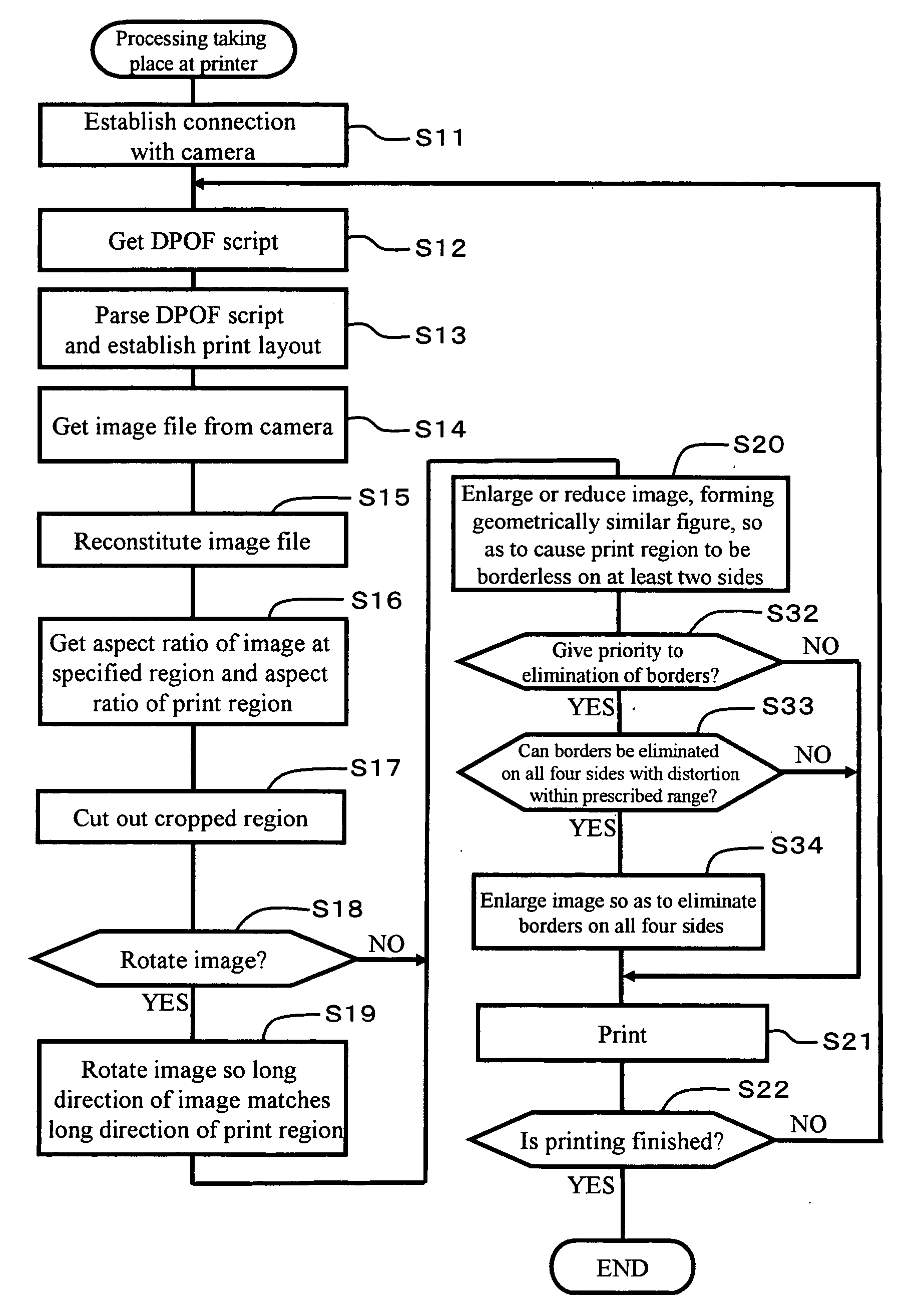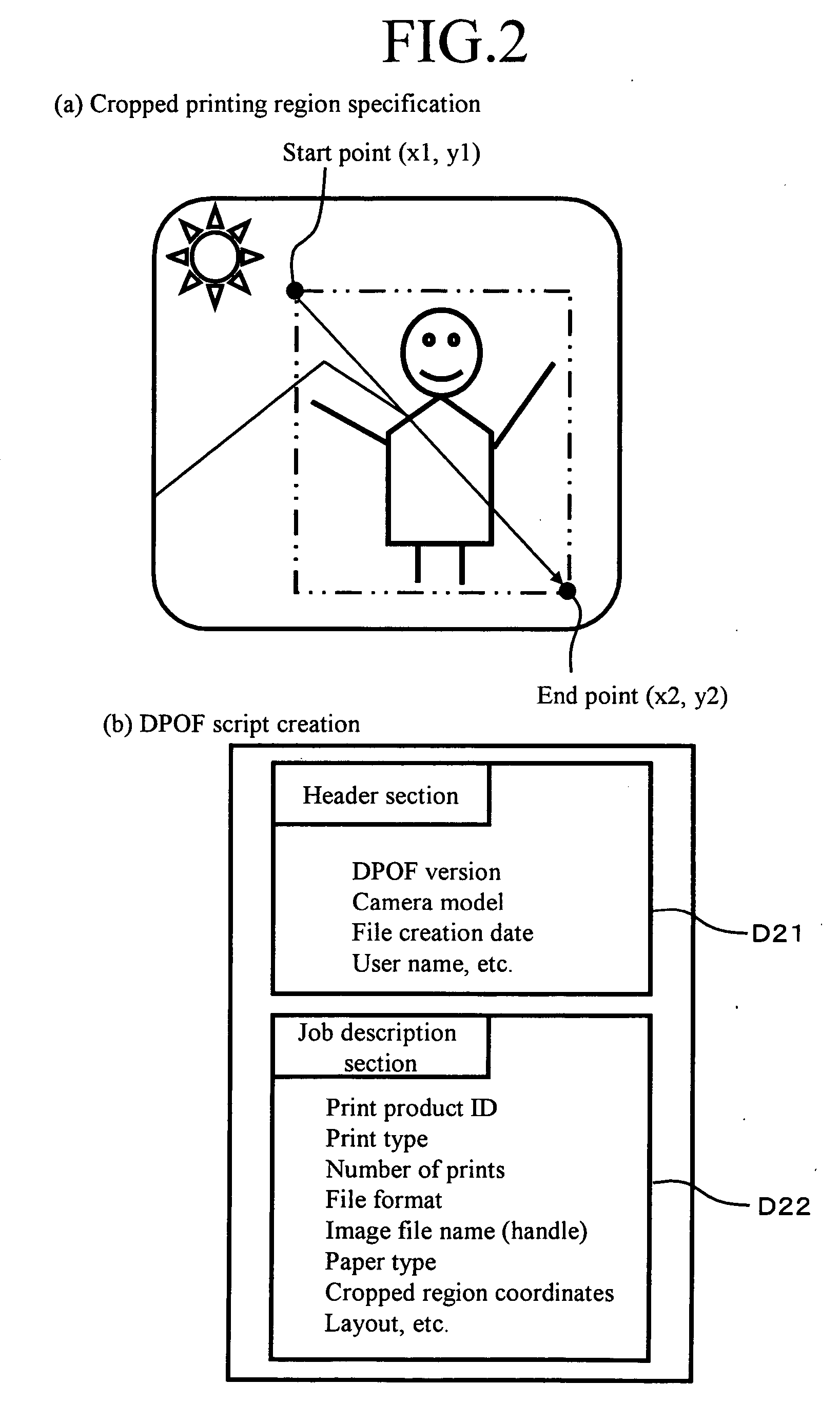Printing system
a printing system and printing technology, applied in the field of printing systems, can solve the problems of not being able to satisfy customers, printing images that are different from the images intended by users, and printing images that end up distorted, etc., and achieve the effect of not impairing image appearan
- Summary
- Abstract
- Description
- Claims
- Application Information
AI Technical Summary
Benefits of technology
Problems solved by technology
Method used
Image
Examples
first embodiment
[0035] 1. First Embodiment
[0036] First, referring to FIGS. 1 through 8, a first embodiment of the present invention will be described. FIG. 1 is a block diagram showing a schematic overview of a printing system associated with the present embodiment.
[0037] Digital camera (hereinafter abbreviated as "camera") 10 is capable of capturing images and storing same as electronic data, and is capable of sending stored image data directly to printer 20 with no personal computer(s) intervening therebetween and causing printing to be carried out. Camera 10 supports the DPOF (Digital Print Order Format) specification. DPOF defines a specification whereby information identifying images selected by a user, the number of sheets or copies to be printed, the manner in which printing is to be carried out, and other such print specification information is saved in a text-based file (DPOF script file); sending of such print specification information to a printer at a lab or to a printer owned by the us...
second embodiment
[0072] 2. Second Embodiment
[0073] Next, referring to FIGS. 9 and 10, a second embodiment of the present invention will be described. Characteristic of the present embodiment is the fact that user(s) is or are made to specify in advance whether priority should be given to lack of formation of borders or whether priority should be given to faithful printing of cropped image(s); and in the event that priority should be given to borderless printing, four-sided borderless printing may be carried out such that cropped image(s) is or are distorted within prescribed range(s).
[0074] FIG. 9 shows print specification processing which might be executed at a camera, the user's preference with respect to whether it is alright to carry out borderless cropped printing being ascertained (S5), following which ascertainment is sought from the user regarding, and the user is made to specify, whether priority should be given to borderless printing or to cropped printing (S31). In other words, in the eve...
third embodiment
[0077] 3. Third Embodiment
[0078] FIG. 11 shows print specification processing which might take place at a camera in accordance with a third embodiment. Characteristic of the present embodiment is the fact that, in the event that borderless cropped printing is specified, user(s) is or are made to choose in advance whether four-sided borderless printing should be carried out even if it means that cropped image(s) will be distorted, or whether two-sided borderless printing should be carried out with cropped image(s) being faithfully reproduced.
[0079] Upon cropped printing and borderless printing being both simultaneously specified by user(s) by way of user interface 14 (S3), the user is made to choose whether two-sided borderless printing should be carried out or whether four-sided borderless printing should be carried (S41).
[0080] In the event that the user chooses to carry out two-sided borderless printing, print request(s) for causing two-sided borderless printing of cropped image(s...
PUM
 Login to View More
Login to View More Abstract
Description
Claims
Application Information
 Login to View More
Login to View More - R&D
- Intellectual Property
- Life Sciences
- Materials
- Tech Scout
- Unparalleled Data Quality
- Higher Quality Content
- 60% Fewer Hallucinations
Browse by: Latest US Patents, China's latest patents, Technical Efficacy Thesaurus, Application Domain, Technology Topic, Popular Technical Reports.
© 2025 PatSnap. All rights reserved.Legal|Privacy policy|Modern Slavery Act Transparency Statement|Sitemap|About US| Contact US: help@patsnap.com



